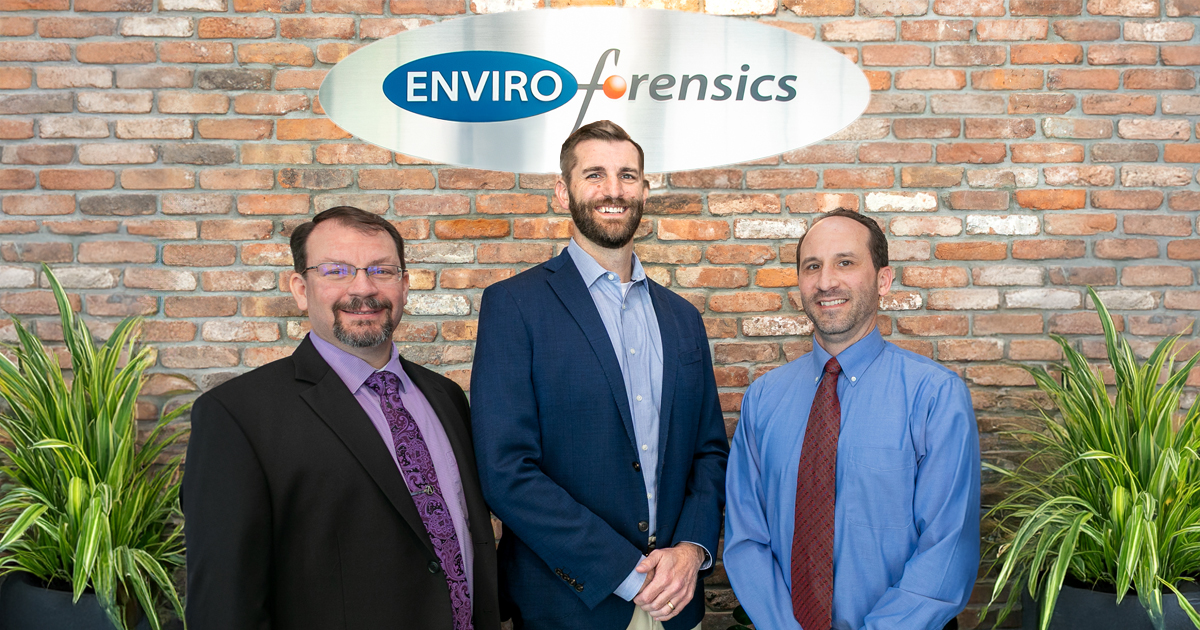LEARN WHY THE EPA MIGHT SOON PUT IN PLACE NEW RESTRICTIONS TO PCE AND TCE UNDER THE TSCA

BY: R. SCOTT POWELL, PE AND NICHOLAS HILL, LPG
The U.S. Environmental Protection Agency (U.S. EPA) is currently assessing additional restrictions to the most common chemicals in the drycleaning industry: perchloroethylene (PCE) and trichloroethylene (TCE). Here we will review why risk management for these chemicals is being re-evaluated and how their management could potentially be affected.
Most of our clients store and use PCE and TCE in their daily operations, so when the U.S. EPA sends out notices that they will be evaluating the health risks of these chemicals under the Toxic Substance Control Act (TSCA), we pay special attention on behalf of our clientele. TSCA has banned most uses of polychlorinated biphenyls (PCBs) and significantly restricted asbestos and lead-based paint, which has led to their general discontinuation in market use. This has also led to a significant increase in disposal management efforts and costs for chemicals included in TSCA restrictions. The outcome of the U.S. EPA assessment in the next two years could significantly change the production, storage, transport, use, and disposal of cleaning products that contain PCE and TCE.
WHAT IS TSCA?
TSCA was initially established in 1976 as the nation’s primary chemicals management law and provided the U.S. EPA with authority to require reporting, record-keeping, testing, and restrictions of specific chemical substances that were determined to pose a risk to human health or the environment.
A brief history of TSCA:
- Title I: The initial act in 1976 concentrated on chemical inventory, expectations that industry would lead testing of manufactured chemicals, banned most uses of polychlorinated biphenyls (PCBs), and significantly restricted mercury.
- Title II: In 1986, the Asbestos Hazard Emergency Response Act was amended to TSCA to require schools to test for asbestos and development management plans. Though TSCA does not provide a ban on asbestos, the known health hazards and negative connotation of asbestos-containing materials (ACM) were sufficient to prompt an industry trend to avoid asbestos-containing products and for facilities to abate ACMs when found.
- Title III: In 1988, the Radon Program Development Act was amended to TSCA to provide states financial and technical support in monitoring and controlling radon.
- Title IV: In 1992, the Residential Lead-Based Paint Hazard Reduction Act was amended to TSCA. Again, this title did not ban lead-based paint, but promotion of negative health effects and guidelines for protecting the public from lead-based paint was sufficient to change the paint supply market.
- Title V: In 1990, the Asbestos School Hazard Abatement Reauthorization Act was amended to TSCA set up State programs to provide technical assistance to schools in developing environmental health programs to address contaminants and hazardous substances encountered in school building construction.
- Title VI: In 2010, the Formaldehyde Standards for Composite Wood Products Act was amended to TSCA. This title restricted the emissions concentration of formaldehyde from processed lumber products, changing the internal process within the industry but not affecting the end sales and products generated.
As demonstrated in Titles I, II, IV, and VI above, rules enacted under TSCA can have variable effects on their relative industries. In addition to the major Title sections reviewed above, there have been numerous small amendments to TSCA that have added restrictions to chemicals in various industries.
PCE AND TCE RISK MANAGEMENT UNDER TSCA
The most recent TSCA amendment in June 2016 required the identification and assessment of high-priority chemicals. The chemical risk assessment process consists of three steps: prioritization, risk evaluation, and risk management. In December 2016, PCE and TCE were identified by the U.S. EPA as high-priority chemicals for review under the TSCA. The U.S. EPA released the Risk Evaluation for Trichloroethylene (TCE Risk Report) in November 2020, and the Risk Evaluation for Perchloroethylene (Ethene, 1,1,2,2-Tetrachloro-) (PCE Risk Report) on December 20, 2020. The U.S. EPA is currently assessing an applicable and appropriate risk management approach for both compounds.
The health risks identified in the PCE Risk Report and TCE Risk Report list acute exposures including neurotoxicity and chronic exposures including neurotoxicity, kidney, liver, immune system and developmental effects, and liver cancer. The PCE Risk Report reviewed 61 conditions of use and identified 59 that represent an unreasonable risk of injury to human health based on those health risks. Similarly, the TCE Risk Report reviewed 54 conditions of use and identified 52 that represent an unreasonable risk of injury to human health based on those health risks. In general, the conditions of use included: manufacturing, import, processing, repackaging, recycling, degreasing, lubricants, adhesives, paints, coatings, automotive care products, metal and stone polishes, welding, textile processing, furniture manufacturing, foundry application, and various dry cleaning-related uses.
WHAT’S NEXT FOR PCE AND TCE RISK MANAGEMENT?
The U.S. EPA’s next step will be to initiate risk management actions for these identified conditions of use to reduce or eliminate the risks. The U.S. EPA has initially identified the following categories where regulations could possibly be implemented to reduce risks through operational prohibition or limitation:
- Manufacturing
- Processing
- Distribution
- Use
- Disposal
The upcoming risk management action consists of Environmental Justice Consultations for PCE and TCE with the U.S. EPA on on June 16, 2021 and July 6, 2021. These consultations will be opportunities for stakeholders to express environmental justice concerns. The U.S. EPA will also have additional consultations with small businesses and state and local governments in the future.
TSCA has been used to limit or eliminate the production, importation, use, and disposal of more than 83,000 chemicals, including polychlorinated biphenyls (PCBs), radon, asbestos, various solvents, and lead-based paint. These past restrictions have had various secondary effects on businesses, notably increasing environmental management and disposal costs. Beyond the potential changes to solvent use in the drycleaning industry, new TSCA rules could affect the environmental management costs associated with contaminated media (concrete, soil, groundwater, and vapors) from the accidental release of solvents, even if a facility changes to cleaner alternatives.
The future limits on PCE are undefined at this time but could be similar to the near-total ban that was applied to PCBs and asbestos, or the U.S. EPA could place limited restrictions on the use or concentration of PCE; there are also various other restriction potentials that could be applied. The U.S. EPA has up to two years following the release of the risk reports to address, by rule, the identified risks. Therefore, draft regulations for TCE should be anticipated in November 2022, and draft regulations for PCE should be anticipated by December 2022.
Contact us to learn more about our regulatory compliance services.
 Scott Powell, PE, Senior Project Manager
Scott Powell, PE, Senior Project Manager
R. Scott Powell is a Senior Project Manager with over 20 years of environmental consulting experience. Powell’s expertise covers a wide variety of projects ranging from due diligence, LUST/petroleum, hazardous material remediation, asbestos, lead-based paint, remedial actions, to remedial systems. He manages complex relationships fostering the cohesive involvement of several parties on multiple sites with co-mingled contaminant plumes requiring the implementation of remedial solutions for chlorinated solvents, hazardous materials, and petroleum hydrocarbon impacts. He has extensive experience with environmental regulatory compliance, including Clean Water Act (CWA), Comprehensive Environmental Response Compensation Liability Act (CERCLA), Resource Conservation Recovery Act (RCRA), Superfund Amendments and Reauthorization Act (SARA), and Toxic Substance Control Act (TSCA). Powell manages negotiations with state and federal regulatory agencies, provides litigation support in matters concerning environmental issues, and acts as a third-party reviewer of work performed by others.
 Nicholas Hill, LPG, Senior Project Manager
Nicholas Hill, LPG, Senior Project Manager
Nicholas Hill has 12+ years of experience with environmental consulting for investigation and remediation projects regulated by state programs, primarily involving chlorinated solvent and petroleum impacts. Hill’s experience as a Senior Project Manager includes research, preparation of work plans and reports, project and budget management, geologic and hydrogeologic data collection, data analysis and interpretation, feasibility study, design, and implementation of various remediation technologies to treat soil, groundwater, and vapor contamination, and coordination of regulatory closure. Hill has implemented and reported numerous Phase I environmental site assessments in accordance with ASTM standards. In addition, Hill has assessed vapor intrusion exposure conditions through soil and sub-slab vapor and indoor air sampling and conducted oversight and monitoring of vapor mitigation system installation.



